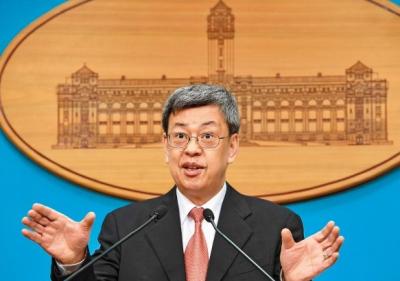Ninety-three-year-old Wang King-ho (王金河) looks like an ordinary grandfather, but there is more to him than meets the eye — a painful story set in the coastal area of southern Taiwan.
Back in the late 1950s, a mystery illness dubbed by locals as “Blackfoot disease” afflicted several townships in Tainan and Chiayi counties including Hsuehchia (學甲), Beiman (北門), Budai (布袋) and Yijhu (義竹), where residents mainly depended on deep wells for drinking water.
“The wells they drilled became deeper and deeper because water from shallow wells tasted too salty as a result of the local salt industry,” said Shin Ya-ping (施雅屏), a staffer from the Southwest Coast National Scenic Area Administration.
But people in the townships did not know the water they drank everyday contained arsenic, which led to the chronic poisoning of local residents, Shin said.
As its name suggests, Blackfoot disease started with the tips of a patient’s limbs — usually their feet — turning black. What often followed the change of color was death of tissue (necrosis) and extreme pain as patients’ blood vessels were unable to deliver nutrients to tissues at the peripheries of their limbs.
Patients usually had to endure multiple amputations as necroses recurred on remaining parts of their limbs.
In addition to physical pain, patients were often shunned as the disease was considered a punishment from the gods.
The condition existed for years before Wang, then a 44-year-old doctor who had studied medicine in Tokyo, came onto the scene.
At the invitation of Lilian Dickson, a US missionary and founder of the Mustard Seed Mission, Wang established the nation’s first and only free clinic for patients with Blackfoot disease in 1960.
“I treated 2,000 to 3,000 patients suffering from [Blackfoot disease] during my 35 years of practice, with the youngest being a five-year-old child,” Wang said in an interview with the Taipei Times in front of his old clinic in Beimen Township.
Wang and Hsieh Wei (謝緯) — a doctor from Puli Township (埔里) in Nantou County — performed amputations inside the small clinic, while Dickson and the mission raised funds to support their work.
“I still remember that one of the patients was a very beautiful bride-to-be,” said Wang Hsiu-yun (王琇雲), a nurse who joined Wang King-ho’s practice in her teens.
“When she was diagnosed with the illness, she kept crying and didn’t want to have her foot amputated,” Wang Hsiu-yun said.
Some patients could not be saved so Wang and his two nurses also made coffins and helped bury them.
“My mother warned me that I could end up being single for the rest of my life because no man would dare to marry me since I helped Dr Wang carry the coffins,” Wang Hsiu-yun said.
Over the years, the clinic also sheltered patients who were rejected by their own families. At one point, the number of patients the small structure housed reached about 80 people.
To encourage patients who had become disillusioned as a result of the physical and psychological pain, Wang King-ho launched a handicraft training class at the back of the clinic in the hope that they could at least acquire some skills.
Wang and his wife Mao Pi-mei (毛碧梅) ran the class for 17 years before the Taiwan provincial government took over in 1978.
Though the provincial government also established an official Blackfoot disease prevention center in Beiman in 1977, Wang did not end his practice until 1996 — 50 years after he first started practicing medicine.
Although Wang saw many deaths and much suffering during his three decades of treating the disease, he said he never felt discouraged.
“I did not become a doctor in order to make more money. That’s why I did not lose my spirit after having treated so many patients,” Wang said.
Wang’s old clinic — a modest Japanese-style one-story wooden structure — was designated as the Taiwan Blackfoot Disease Socio-Medical Service Memorial House at the end of September 2007 to commemorate Wang’s selfless dedication and the history of a disease unique to Taiwan.
The house faithfully recreates Wang’s operating room as it was 30 years ago and has a set of patients’ amputated feet preserved in formaldehyde.
“The memorial house now serves as a witness of Taiwan’s 30-years of Blackfoot disease. It can also help pass on Dr Wang’s spirit,” said Wang Hsiu-yun, who returned to Beiman as a volunteer at the house after learning of the opening of the memorial.
“Dr Wang often delivers speeches to medical students,” she said. “He usually tells them that even though it is great for them to be able to make a lot of money [by becoming a doctor], sometimes doing volunteer work can bring happiness that they cannot buy.”

Several Chinese Nationalist Party (KMT) officials including Chairman Eric Chu (朱立倫) are to be summoned for questioning and then transferred to prosecutors for holding an illegal assembly in Taipei last night, the Taipei Police said today. Chu and two others hosted an illegal assembly and are to be requested to explain their actions, the Taipei City Police Department's Zhongzheng (中正) First Precinct said, referring to a protest held after Huang Lu Chin-ju (黃呂錦茹), KMT Taipei's chapter director, and several other KMT staffers were questioned for alleged signature forgery in recall petitions against Democratic Progressive Party (DPP) legislators. Taipei prosecutors had filed

Taiwan would welcome the return of Honduras as a diplomatic ally if its next president decides to make such a move, Minister of Foreign Affairs Lin Chia-lung (林佳龍) said yesterday. “Of course, we would welcome Honduras if they want to restore diplomatic ties with Taiwan after their elections,” Lin said at a meeting of the legislature’s Foreign Affairs and National Defense Committee, when asked to comment on statements made by two of the three Honduran presidential candidates during the presidential campaign in the Central American country. Taiwan is paying close attention to the region as a whole in the wake of a

President William Lai (賴清德) has appointed former vice president Chen Chien-jen (陳建仁) to attend the late Pope Francis’ funeral at the Vatican City on Saturday on his behalf, the Ministry of Foreign Affairs said today. The Holy See announced Francis’ funeral would take place on Saturday at 10am in St Peter’s Square. The ministry expressed condolences over Francis’ passing and said that Chen would represent Taiwan at the funeral and offer condolences in person. Taiwan and the Vatican have a long-standing and close diplomatic relationship, the ministry said. Both sides agreed to have Chen represent Taiwan at the funeral, given his Catholic identity and

NEW WORLD: Taiwan is pursuing innovative approaches to international relations through economics, trade and values-based diplomacy, the foreign minister said Taiwan would implement a “three-chain strategy” that promotes democratic values in response to US tariffs, Minister of Foreign Affairs Lin Chia-lung (林佳龍) said. Taiwan would aim to create a “global democratic value chain,” seek to capitalize on its position within the first island chain and promote a “non-red supply chain,” Lin was quoted as saying in the ministry’s written report to the Legislative Yuan submitted ahead of the legislature’s Foreign Affairs and National Defense Committee meeting slated for today. The Ministry would also uphold a spirit of mutual beneficial collaboration, maintaining close communication and consultations with Washington to show that Taiwan-US cooperation